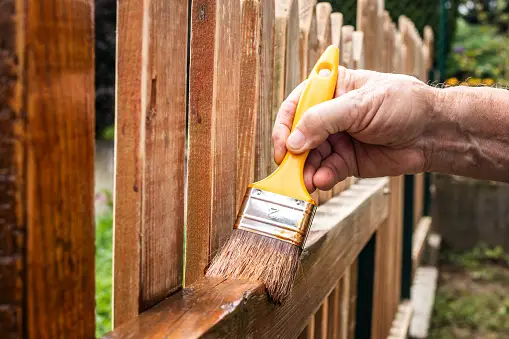Learn how undersea cables are going to shape global internet in the coming days.
The Race for Undersea Cables: How They Shape the Global Internet
Imagine a world without the internet. Now, imagine how that information would travel across vast oceans if not through the invisible veins of our planet: undersea cables. These silent giants form the backbone of the global internet, carrying the lifeblood of data across continents at breakneck speeds. But unlike the readily visible cell phone towers or internet cafes, the story of undersea cables is one of hidden depths, fierce competition, and a constant race for greater capacity and speed.
This article delves into the fascinating world of undersea cables, exploring their history, technological advancements, and the fierce competition that shapes the intricate web connecting our digital world.
A Pioneering Past: The Seeds of Subsea Connectivity
The story of undersea cables stretches back to the mid-19th century, predating the internet itself. The first successful transatlantic cable was laid in 1866, connecting Europe and North America and revolutionizing communication at the time. These early cables relied on Morse code transmission and were prone to faults, but they laid the groundwork for the sophisticated communication networks we rely on today.
Technological Advancements: From Telegraph to Terabits
Undersea cable technology has undergone a remarkable evolution. Early telegraph cables used copper wires for data transmission, offering limited capacity. The invention of fiber optic cables in the 1970s marked a turning point. Fiber optic cables utilize light pulses to transmit data, offering significantly higher bandwidth and faster speeds.
Modern undersea cables are marvels of engineering. They are comprised of multiple hair-thin glass fibers encased in protective layers of steel, copper, and other materials to withstand immense pressure and harsh ocean environments.
Breaking Speed Records: The Drive for Bandwidth
The insatiable demand for data has driven a relentless pursuit of increased cable capacity. Today's cables can transmit data at terabit-per-second (Tbps) speeds, a staggering improvement from the kilobit-per-second (kbps) speeds of early telegraph cables.
This constant push for bandwidth is due to the ever-growing volume of data we generate. From streaming high-definition videos to online gaming and cloud computing, our digital activities require increasingly robust connections.
The Players in the Game: A Global Landscape
The ownership and operation of undersea cables is a complex landscape. Large telecommunication companies, consortiums of multiple companies, and even some governments play a part. This creates a competitive environment where companies invest heavily in building new cables and upgrading existing ones to secure a larger share of the internet traffic.
A Network of Connections: Mapping the Underwater Web
Undersea cables don't simply crisscross the ocean floor in a haphazard manner. They are meticulously planned and laid along specific routes, connecting continents and major population centers.
These routes are carefully chosen to avoid environmental hazards like underwater volcanoes or earthquake zones. Additionally, considerations are made for minimizing cable length while taking into account geographic features and existing infrastructure.
Beyond Geography: The Strategic Importance of Undersea Cables
The internet is not just a technological marvel, it's a geopolitical one. Control over undersea cables provides significant influence in the flow of information across the globe. This has led some countries to prioritize investing in their own cables and landing stations to secure data sovereignty and avoid dependence on other nations.
The Race for Latency: Shaving Milliseconds for Financial Gains
Latency, the time it takes for data to travel between two points, plays a crucial role in many online activities. High-frequency trading in financial markets, for example, relies on ultra-low latency connections.
This has fueled a sub-race within the undersea cable world. Companies compete to build the shortest and most direct routes between key financial centers, shaving off precious milliseconds that can make a significant difference in the world of high-frequency trading.
The Security Concerns: A Network of Vulnerability
While undersea cables are vital to global communication, they also present security concerns. There have been instances of cable sabotage and accidental damage by fishing trawlers or other maritime activities. The potential for intentional disruption of these crucial networks necessitates robust security measures.
Cable companies often work with governments and international organizations to ensure physical protection and develop strategies to mitigate potential threats.
Looking Ahead: The Future of Undersea Cables
The intricate network of undersea cables that silently crisscross the ocean floor serves as the backbone of the global internet. As our reliance on data grows exponentially, the race for faster, more robust, and secure undersea cables continues. But what does the future hold for these vital components of our digital infrastructure? Let's explore some key trends shaping the evolution of undersea cables.
Technological Advancements: Pushing the Limits of Capacity and Speed
The relentless pursuit of data is a defining characteristic of the digital age. To keep pace with this demand, undersea cable technology will continue to evolve at a rapid pace. Here are some potential areas of advancement:
- Next-Generation Fiber Optics: Researchers are constantly developing new fiber optic technologies that can transmit data at even higher speeds. Materials like hollow-core fibers hold promise for significantly increased bandwidth compared to current technology.
- Advanced Signal Processing: Innovation in signal processing techniques can optimize data transmission within existing cables, squeezing more capacity from the infrastructure already in place.
- Subsea Coherent Detection Systems: These systems utilize advanced algorithms to improve signal clarity and reduce noise, potentially doubling the capacity of existing cables without additional infrastructure investment.
These advancements, along with further optimization of cable design and materials, will push the boundaries of undersea cable capabilities, offering ever-increasing data transmission speeds and capacity.
Sustainability: Building a Greener Future for Undersea Cables
The environmental impact of undersea cable deployment and maintenance is gaining increasing attention. Here's how the industry is moving towards a more sustainable future:
- Energy-Efficient Cable Designs: New cable designs aim to reduce the energy consumption required for signal transmission, minimizing the environmental footprint.
- Renewable Energy Integration: Powering cable landing stations and maintenance vessels with renewable sources like solar or wind power offers a significant step towards sustainability.
- Environmentally-Friendly Materials: Research is underway to develop environmentally friendly materials for cable construction, minimizing the potential harm to marine ecosystems during cable laying and maintenance.
These efforts are crucial for ensuring the long-term viability of undersea cables while minimizing their impact on the delicate ocean environment.
Security Concerns: Safeguarding the Global Digital Lifeline
Undersea cables are critical infrastructure, vulnerable to both accidental damage and intentional disruption. Several strategies are being implemented to enhance security:
- Redundancy and Diversification: Building redundant cable routes and utilizing diverse landing points minimizes the impact of a single cable failure or disruption.
- Advanced Security Monitoring: Employing sophisticated monitoring systems allows for real-time detection of potential threats, such as unauthorized tampering with cables.
- International Collaboration: Governments and cable operators are fostering closer cooperation to develop robust security protocols and share threat intelligence.
These measures will be essential for safeguarding the integrity of undersea cables and ensuring the smooth flow of data across the globe.
The Rise of Regional Cables: Addressing the Digital Divide
While major tech companies and consortiums often dominate the construction of major transoceanic cables, a growing trend is the emergence of regional cables. Here's how these cables play a role:
- Connecting the Underserved: Regional cables can connect smaller countries or remote regions that might not be economically feasible for large-scale, transoceanic cable projects.
- Boosting Intra-Regional Connectivity: Regional cables can improve data flow within specific regions, fostering economic growth and facilitating communication within a particular area.
- Promoting Diversification: The rise of regional cables reduces dependence on a few major players in the undersea cable landscape, fostering a more diversified and competitive market.
These regional cables play a vital role in bridging the digital divide and ensuring equitable access to the global internet infrastructure.
The Future of Maintenance: Embracing Innovation and Automation
Maintaining undersea cables, often located in remote and challenging environments, is a complex and expensive undertaking. Here's how technology is changing the game:
- Underwater Drones: The use of autonomous underwater vehicles (AUVs) for cable inspection and maintenance offers a safer, more cost-effective approach compared to traditional methods.
- Advanced Sensor Technology: Integrating advanced sensors into cable designs allows for real-time monitoring of cable health, enabling proactive maintenance and preventing potential failures.
- Artificial Intelligence (AI): AI can be utilized to analyze data collected from sensors and identify potential issues early on, allowing for faster and more efficient maintenance operations.
Embracing these technologies will optimize undersea cable maintenance, ensuring their longevity and minimizing operational costs.
Conclusion
The future of undersea cables hinges on a spirit of collaboration. International cooperation is essential for building a robust and secure global digital infrastructure. This requires coordinated efforts on multiple fronts:
- Technology Sharing: Collaborative research and development can accelerate advancements in fiber optics, signal processing, and sustainable materials, ensuring shared benefits for all players in the undersea cable landscape.
- Standardized Security Protocols: Unified security protocols will enhance the resilience of undersea cables against potential threats and ensure a global commitment to data security.
- Equitable Access: Collaborative efforts are needed to bridge the digital divide. Supporting the development and deployment of regional cables can foster equitable access to the internet for underserved nations and regions.
Ultimately, the success of undersea cables goes beyond mere technical prowess. The digital future we envision is one where connectivity empowers individuals and communities globally. By prioritizing sustainability, security, and equitable access, we can ensure that undersea cables continue to serve as the vital arteries of a truly interconnected world. As we navigate the uncharted waters of the digital age, collaboration remains the key to unlocking the full potential of these silent giants, shaping a future where the internet truly connects us all.








.webp?locale=en)

















